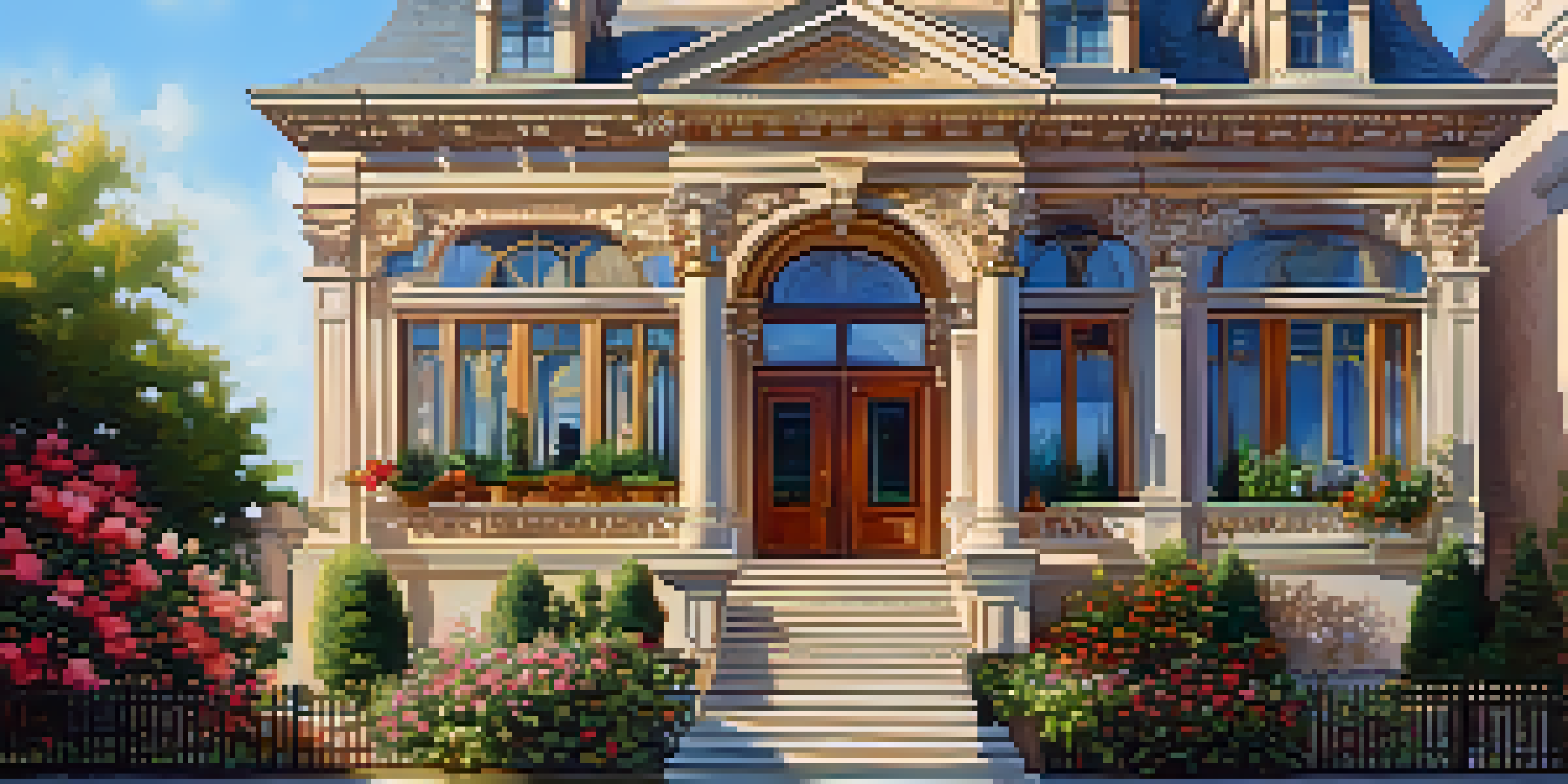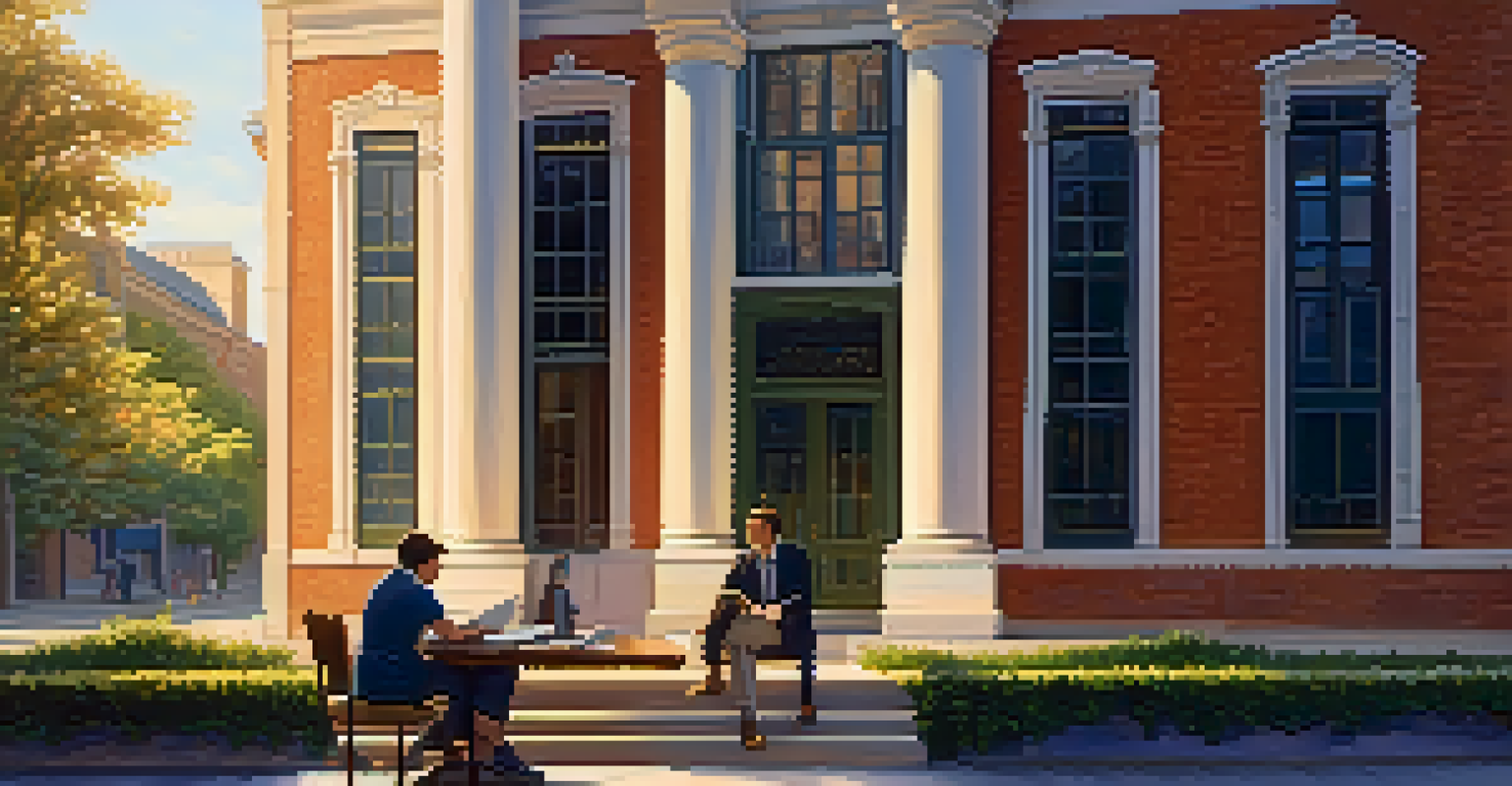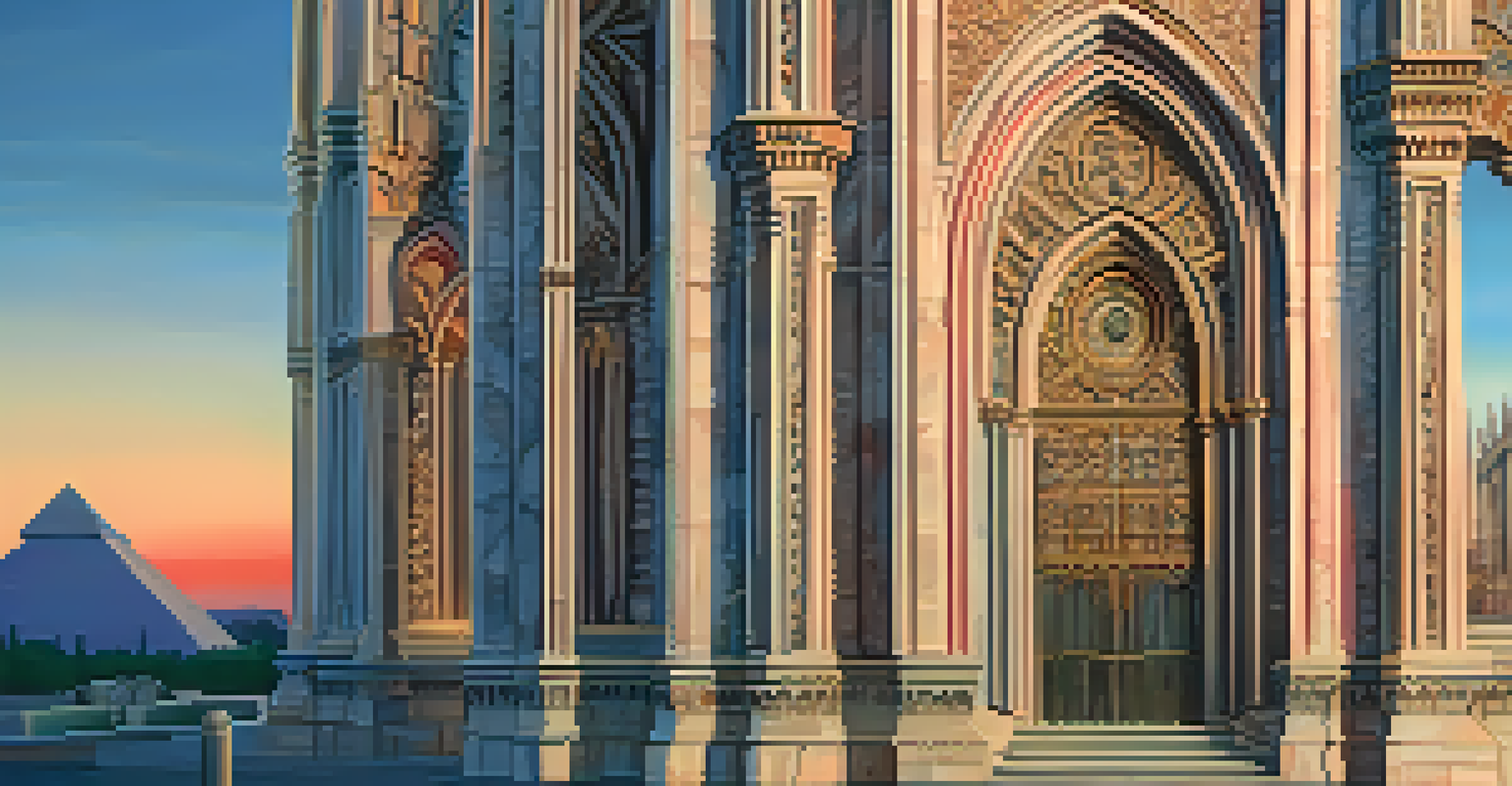Challenges of Preserving Original Architecture in Renovations

Understanding the Importance of Original Architecture
Original architecture tells a story about the culture and history of a place. It reflects the craftsmanship and materials available at the time it was built, providing a glimpse into the past. Preserving these structures is crucial for maintaining the character of neighborhoods and cities.
The past is never dead. It's not even past.
When we renovate, we often face the dilemma of modern needs versus historical integrity. Striking a balance can be challenging, especially when the original design may not meet contemporary standards. However, understanding the significance of these buildings can guide us in making thoughtful decisions.
Moreover, preserving original architecture can enhance property values and attract tourism. People are drawn to unique, historic buildings that offer a sense of place and identity. Thus, the challenge lies not just in preservation but in promoting these structures as valuable assets.
Navigating Building Codes and Regulations
Renovating older buildings often means navigating a complex web of building codes and regulations. These rules are put in place to ensure safety and accessibility, but they can sometimes clash with the preservation of original features. For instance, adding fire escapes or elevators might require altering the facade, which can be a point of contention.

Many cities have specific guidelines for preserving historical buildings, which can complicate renovation plans. These guidelines may dictate the materials that can be used or the design elements that must be maintained. While these regulations aim to protect heritage, they can also add layers of bureaucracy that slow down the renovation process.
Preserving History Enhances Value
Maintaining original architecture not only preserves cultural heritage but also increases property values and attracts tourism.
It's essential for architects and builders to collaborate closely with local preservation boards. This collaboration helps to ensure that renovations comply with regulations while respecting the building's historical significance. By working together, we can find innovative solutions that honor the past and meet modern needs.
Balancing Historical Integrity with Modern Needs
One of the biggest challenges in renovations is balancing historical integrity with modern needs. Homeowners may want to incorporate new technologies, like smart home systems, which can be at odds with preserving the original architecture. Finding ways to integrate these technologies without compromising the building's character is crucial.
We do not inherit the earth from our ancestors; we borrow it from our children.
Another aspect to consider is the functionality of the space. Often, original designs do not cater to contemporary lifestyles. For example, open floor plans are popular today, but many older homes have closed-off rooms that may not suit modern living. Renovators must think creatively to enhance usability while retaining the building's essence.
Ultimately, the goal is to create a harmonious blend of the old and the new. This might involve using materials that mimic original designs or adding modern touches that complement the architecture. By being thoughtful in our approach, we can create spaces that honor history while serving current needs.
Financial Implications of Preserving Original Features
Preserving original architecture can come with significant financial implications. Restoration work often requires specialized materials and skilled labor, which can drive up costs. Homeowners and developers must budget accordingly, understanding that maintaining historical elements is an investment in the future.
Additionally, there may be financial incentives available for those who choose to preserve historical features. Grants, tax credits, and low-interest loans can help alleviate some of the costs associated with renovations. Researching these options can make a substantial difference in overall expenses.
Community Engagement is Crucial
Involving local residents in preservation efforts fosters a sense of ownership and ensures renovations align with community values.
However, it's important to weigh the long-term benefits against the initial costs. Preserved buildings can appreciate in value and contribute to the overall aesthetic of a community, potentially leading to increased property values. In the end, the financial aspect of preservation can be seen as a strategic investment rather than just an expense.
Community Engagement in Preservation Efforts
Engaging the community is vital in the preservation of original architecture. Local residents often have a deep emotional connection to historical buildings and can provide valuable insights during the renovation process. Their involvement not only fosters a sense of ownership but also ensures that the renovations align with community values.
Public meetings and forums can serve as platforms for discussing proposed renovations, allowing residents to voice their opinions and concerns. This collaboration can lead to innovative ideas that honor the building's history while addressing modern needs. By working together, communities can create solutions that benefit everyone.
Moreover, community engagement can help build support for preservation efforts. When residents feel invested in a project, they are more likely to advocate for its success. This grassroots support can be crucial for overcoming challenges and ensuring that original architecture is preserved for future generations.
The Role of Technology in Preservation
Technology plays a significant role in the preservation of original architecture. Advanced tools, like 3D scanning and modeling, allow architects to document existing structures in detail. This technology can aid in creating accurate restoration plans that respect the building's historical integrity while implementing necessary upgrades.
Additionally, digital archives can store historical data about a building's construction, modifications, and previous renovations. This wealth of information can guide renovation efforts and help preserve the original design. By harnessing technology, we can approach preservation with greater knowledge and precision.
Technology Aids Preservation Efforts
Advanced technologies, like 3D scanning and sustainable solutions, can enhance restoration projects while respecting historical integrity.
Furthermore, sustainable technologies can be integrated into renovations without compromising architectural integrity. For example, installing energy-efficient windows that mimic the original style can enhance a building's performance while maintaining its character. Embracing technology in preservation efforts can lead to innovative solutions that bridge the gap between history and modernity.
Lessons from Successful Preservation Projects
Looking at successful preservation projects can provide valuable lessons for future renovations. These examples often showcase how thoughtful planning and community involvement can lead to outcomes that respect history while modernizing spaces. Case studies can inspire architects and builders to creatively solve challenges.
For instance, a historic theater renovation might have integrated modern seating and sound systems while preserving the original decor. This approach not only maintains the building's charm but also enhances its functionality for contemporary audiences. Such projects highlight that preservation and modernization are not mutually exclusive.

Moreover, these success stories can serve as blueprints for future endeavors. By analyzing what worked well and what could be improved, stakeholders can refine their strategies for preserving original architecture. Ultimately, these lessons can ensure that we continue to honor the past while adapting to the future.